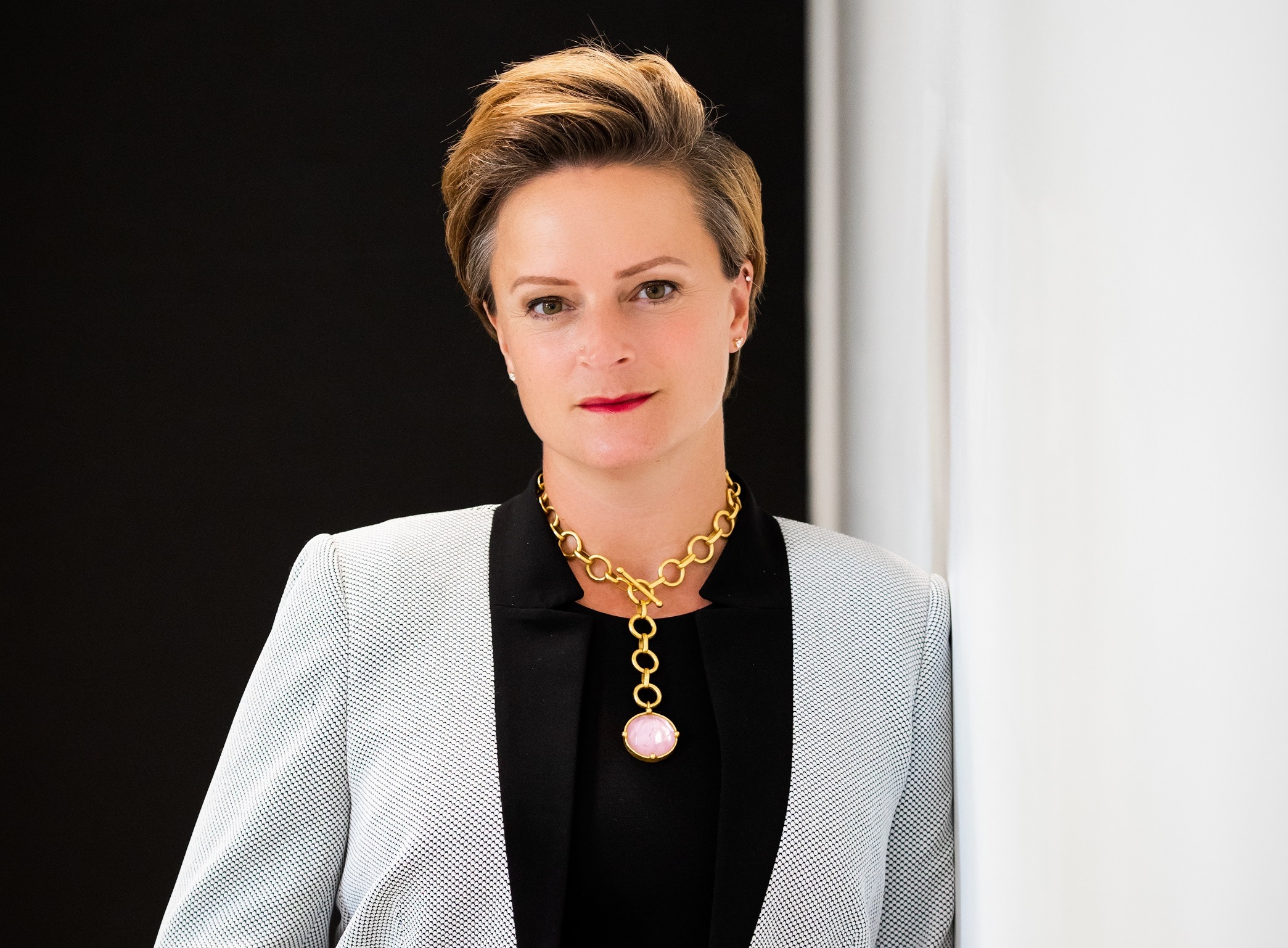
“It’s an interesting time!” smiles James Hofmann, president of IBTTA. The boss of North Texas Tollway Authority (NTTA) took over the year-long presidency of the international tolling organisation in January. At exactly the same time, Kathryn Clay began her tenure as IBTTA executive director and CEO following two decades of Pat Jones running the show.
“So we're going through that transition,” continues Hofmann. “A new CEO in the helm with new ideas and different perspectives, open for new ideas and opportunities, it’s just exciting.” A big part of his role will be “just making sure that we continue to head in the direction we need to head in, and that we don't get distracted”.
There’s certainly a lot going on. Infrastructure funding challenges remain an evergreen issue, and the need for transportation to be sustainable and resilient is – given recent hurricanes, floods and wildfires – an increasing concern. So where does the money come from? “Gas tax in the US hasn't gone up since 1993,” says Hofmann. “In the state of Texas, ours was set in 1991 so you're basically looking at over 30 years of no increase - so it's probably lost 50-65% of its purchasing power. And for me, that's where tolling can come in.”

Necessary infrastructure
The Dallas/Fort Worth area that the North Texas Tollway Authority (NTTA) – of which Hofmann is executive director and CEO - serves is home to eight million people, with the population expected to grow another million in the next eight years.
“We would love it if there was enough tax revenue to pay for all of the necessary infrastructure,” he says. “But the fact of the matter is, there isn't. Having tolling as a tool in the toolbox is important, because the region can come to us and ask: ‘Do you guys have the capacity to build certain projects?’ And to date, we've stepped up and we fill that void - and we do it without tax dollars. So we are completely self-funded. Nationally, tolling should be looked at the same way: there's only so many dollars - especially if you start siphoning those dollars off to support other non-transportation-related items. Tolling is a self-sustaining revenue source that can continuously be reinvested back into the infrastructure - not just to build it, but also to maintain it, and then it frees up tax dollars to be used elsewhere.”
The pace of technological change may provide some answers. Hofmann thinks the industry is at the beginning of probably the biggest advance in transportation since the horse and buggy was replaced by the internal combustion engine.
"What do we need to do to propel us 20 years into the future?"
“Just like then, technology is driving that change today,” he says. “We don't know when autonomous vehicles will get here – that will be a game changer. But connected vehicles are here and they're only growing in proliferation. So that opens up a lot of opportunities for us: the first areas that we're seeing, obviously, are safety-related. At NTTA, we've got a focus on the next few years to continuously leverage in-vehicle technology, as well as cellular technology, to obtain information from - and disseminate information to - our customers, our users.”
Connected vehicles will also allow agencies to change how they collect tolls. “Right now, we either read a transponder or we take a licence plate and we find out where to bill you and attempt to collect that way; connected vehicle technology will allow us to skip both of those when it becomes mainstream,” Hofmann says. “But it's kind of chicken-and-egg. We're looking at private industry saying: ‘Hey, give us that technology’ and they're looking at us saying: ‘Hey, when is it that you guys are ready to fully invest in this?’
It’s similar to the 2000s, he says, when a couple of agencies began to take cash booths out of their toll lanes. “You know, you just kind of have to do it,” he smiles. “So who's going to be going out there, first and foremost, to look at collecting tolls via connected vehicles, and then when's the private sector going to get there?”
AI and machine learning
He is also enthused about artificial intelligence and machine learning technologies and their computational capabilities: aggregating multiple data sources which can then be analysed to provide predictive and decision-making capabilities. “I think we're right on the cusp of that environment, of those opportunities,” he says.
NTTA is not afraid to try new things. Two decades ago it attempted to adapt technology that was being used for airport security. “We approached one of the main vendors and said: ‘Can you take that technology and adapt it to free-flowing roadways, so if somebody were to stop on our roads, or a mattress were to end up in the lanes, it would automatically identify that and alert our traffic management centre?’”
The technology has evolved but the principle remains the same, he suggests. “The ability for us to take video, feed it into analytical software and [for it] to then alert us when there's an anomaly or an incident on our roadways is paramount, because the quicker that we know that there's an incident, the faster we can respond to it, with the correct resources. You know, is it a hazmat spill versus a flat tyre?”

As well as increasing safety, this sort of responsiveness also helps to create a more positive user experience – something that is increasingly important in a world where people expect services to be available at the tap of a smartphone. Of course, some drivers always used to complain because they didn’t have the right small change in the days of toll booths, too - but Hofmann is acutely aware that advances in technology have to be handled in a way that suits the way people actually live their lives.
“As an industry, we haven't necessarily made video tolling as easy as they would like to see it,” he acknowledges. “We have a saying around here, from a customer service and payment perspective: we're not going to be compared to another toll agency - they're going to compare us to Amazon, the utilities, or Netflix. And so we need to do things that make us look more like those companies than not.”
This is sometimes a challenge. “You know, as innovative as the toll industry is, we also tend to be very conservative,” he goes on. “And we tend to not as quickly embrace some of the newer technologies that maybe other industries might. But that being said, I think what you see on the horizon is the emergence of digital payment technologies, and a number of us are trying to figure out: what does that mean to us and what does that mean to our customer? If I have a customer today that pays me with a with a credit card, would giving them the ability to pay with Apple or Google Pay improve their experience with us, or not?”
Digital experiences
A trend towards streamlining things, to fall more in line with other digital experiences, is therefore underway, he says: “Especially in a lot of the metropolitan areas, you're looking at how can we take tolling payments, Uber ride-share payments, transit payments, and is there a way that we can provide a platform for them to pay for all of their transportation services, whether that's Mobility as a Service or something else? It'll be interesting to see where we end up.”
Outside of his day job, it is a packed 12 months for Hofmann. IBTTA’s Be Safe Together global campaign, started in 2024, will run again this year in the week of 23 June: “It’s a very important reminder to make sure that we're focusing on employee safety and customer safety as well. That is something that will resonate for some time with IBTTA, and rightfully so.”
He will also be instrumental in setting IBTTA’s strategic plan. “We're looking at this as a great opportunity to set not just the next five years, but for the next 20-plus years,” he says. “We've got a very strong foundation, a very strong membership, a sense of community; public and private sector people work together to exchange ideas. So I want us to look at, over the next five years, what do we need to do to not just keep that momentum going, but to propel us 20 years into the future.”
“Tolling is a self-sustaining revenue source that can continuously be reinvested back into the infrastructure - and then it frees up tax dollars to be used elsewhere”
Advocacy is going to become more important for IBTTA going forward, as is community and membership – i.e. the value of being an IBTTA member. Workforce development will be another focus “because we don't have enough young people coming into the transportation industry to meet the demand of today, much less the demand of tomorrow”.
He is very excited about the possibilities. “Having a strategic plan that identifies what we need to do differently next year to help meet some end goal will drive everything that we do in the organisation: it will drive our committees, our workforce, our task force, our working groups, it will drive the types of presentations we're looking for, and the content and the topics.”
He envisages, with member involvement, a “wonderful machine that just works in harmony to accomplish our goals”.
And of course, the arrival of Kathryn Clay as CEO creates opportunity. “The fact that Kathryn is here is just another dynamic that is exciting, in my year as president, to figure out: okay, how can we take her expertise and her experience and her strengths to further push us into the future?”
It's shaping up to be a busy one. See you in Dallas!
What's on at the IBTTA Technology Summit 2025?
“We'll have over 800 professionals from across the world,” says IBTTA 2025 president James Hofmann. “There will be agency staff - so operators - and there will be private sector folks that support those operators. The agenda focuses on how technology can help move organisations forward - in the engineering, planning, design and construction side of things and the operations and maintenance of our roadways. On the data analytics side, it could be: how do we interact with our customers more? What kind of programmes do we need to be looking at to better serve our customers?”
Recovery and resilience – in the face of natural disasters and cybersecurity breaches - are also subjects of interest. “When you look at the types of topics that are going to be covered, it's basically soup-to-nuts of how technology serves an organisation,” Hofmann says. “And all of the vendor and consultant communities that we rely on to provide us tools and services and resources are going to be there as well. If you've never been, or you're looking at getting into the tolling industry, you can see what opportunities are there - because they're numerous. Transportation is changing. Toll agencies tend to have money, which means that they can adapt quicker than other organisations may be able to.”
IBTTA is holding half a dozen conferences this year, covering finance, road user charging, communications, legal, roadway maintenance and operations. “Pick one and come and give it a shot,” Hofmann concludes. “Because I think what you'll find is a wonderful group of professionals that are there for a purpose - and that's to serve our customers in the best way that we can.”
From 10am to 4pm on Saturday 22 March, as part of IBTTA’s long-standing commitment to local communities in the places it holds events, there will be a Blood Drive in partnership with the American Red Cross at the conference venue, the Hyatt Regency Dallas. The initiative is aimed at replenishing blood stocks to support Texas communities affected by the recent storms.
IBTTA Technology Summit 2025 is in Dallas, TX on 22-25 March
www.ibtta.org/events/technology-summit-dallas













